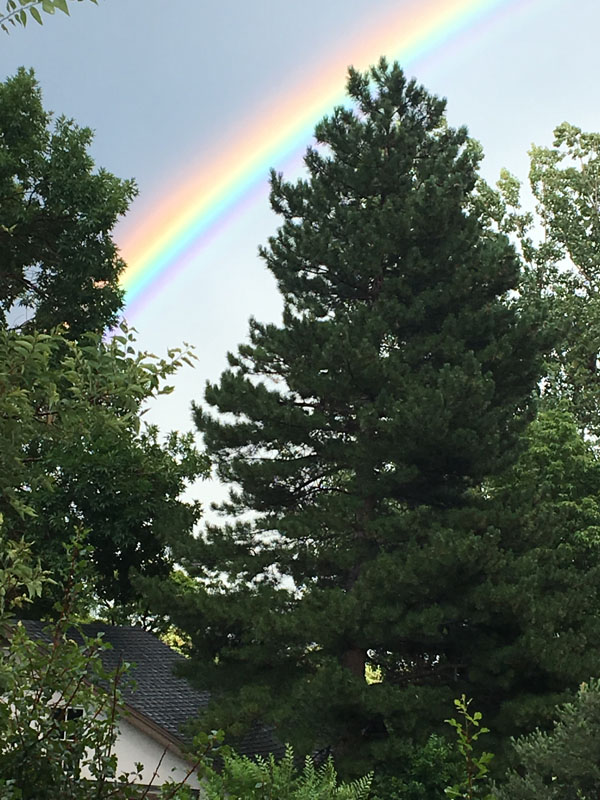Rainbow
Photograph by Lesley Smith.

Lesley Smith posted this picture on Facebook. I had never seen a rainbow in which the colors were so bright and, in particular, well differentiated. In most rainbows, the colors sort of blur into one another. I suspected that the colors were so sharp because the raindrops were comparatively large; exceptionally large droplets would give rise to minimal diffraction and thus blur the colors less than in more prosaic rainbows. Small droplets give rise to a large diffraction angle and can blur the colors to the point where the rainbow appears white (alas, I have never seen a white rainbow, but I have read about them). The sky was also very clear, so there was minimal scattering by particulates in the air.
I took to the Web, and NCAR came to the rescue. Buried, I am afraid, under a heading about supernumerary arcs, they note, without explanation,
The "purity" of the colors of the rainbow depends on the size of the raindrops. Large drops (diameters of a few millimeters) give bright rainbows with well defined colors; small droplets (diameters of about 0.01 mm) produce rainbows of overlapping colors that appear nearly white.
This photograph also shows, incidentally, that the sky is very much brighter inside the arc than outside, because the sky outside the arc lies beyond the critical angle.
